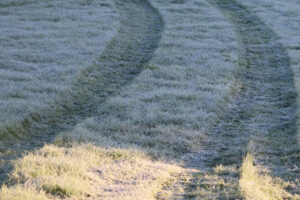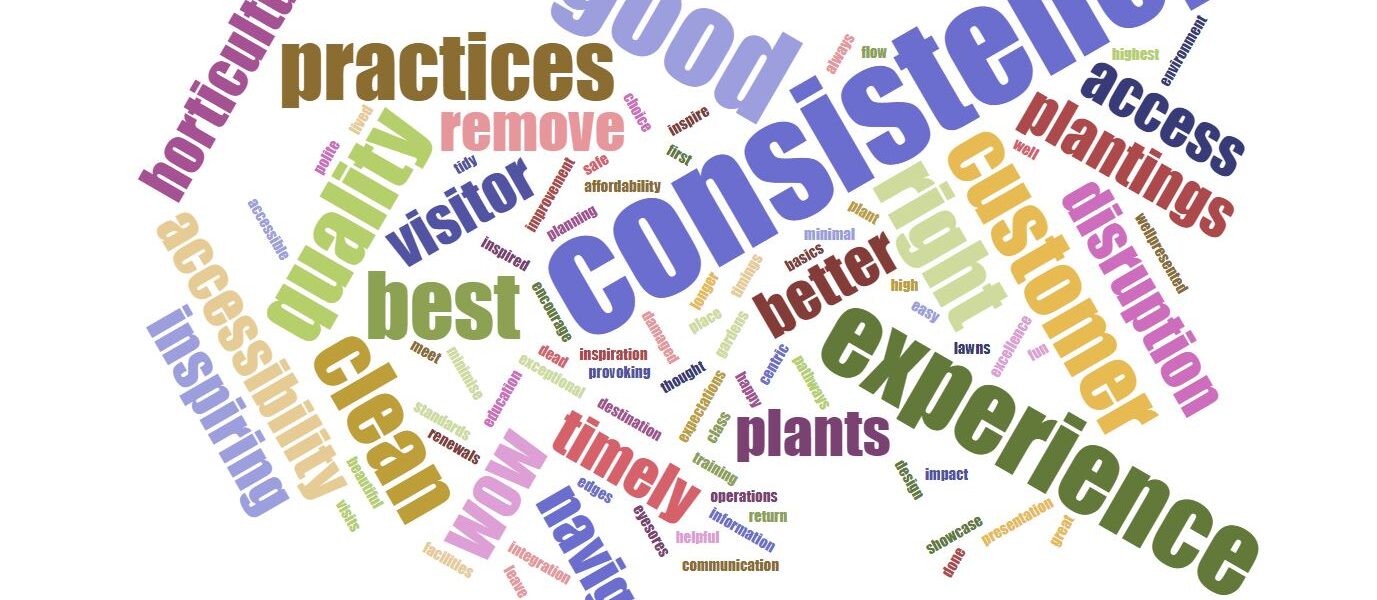A roadmap to achieving horticultural excellence
By Barbara Wheeler
Achieving excellence in growing and cultivating plants and gardens is an intrinsic part of each of our organisations, whether big or small. The technical aspects of good horticultural practice and horticultural excellence are intimately understood by experienced staff in our businesses, and frequently passed on verbally to newcomers. Often missing, is having clarity on what ‘good’ and ‘excellence’ looks like and how it is consistently achieved across the business. How clarity is achieved is vital in paving the road to sustaining long term horticultural excellence, all with the visitor at the centre of the ethos.

Gaining clarity is of particular importance for organisations that suffer high turnover in short time-frames. However, with natural attrition gathering apace in the horticulture industry, and set to increase exponentially over the next 5-20 years, this will hit home harder as more organisations lose significant institutional knowledge and experience. Regardless of which sector of the industry you are in, this will resonate. Relying solely on the verbal passing on of knowledge, and not combining this with clear expectations of the practice standards everyone is working towards, can create a sense of confusion – what exactly are we all aiming for and what does good look like? What is excellence? The answers look quite different depending on each person’s background experiences. Weeding a garden is a great example. For some, good is having the area weed free and the surface perfectly cultivated, free of footprints and uncompacted. For others, good is pulling out the big weeds and the job is done.
Adding to this lack of clarity, when you look around your business there will no doubt be a tonne of unwritten rules, some of which are passed down, and some of which have been forgotten about or have been reduced to being less important, to new staff who perhaps are not as experienced. What is the organisation’s tolerance for driving garden vehicles on wet lawns; what is the allowable tolerance for how long dead plants sit in the garden bed or the nursery row or on the shop shelf; what are the acceptable standards relating to the style of barriers to use around fallen trees? These few examples illustrate why it is important to not just know, but document, what ‘good’ looks like to your organisation.
At Auckland Botanic Gardens we have been working on documenting what excellence looks like, getting agreement on the expectations and on how to achieve them. Looking through the visitor lens is important, as what we present is for those who choose to come through the gates. In all we do every day in the Botanic Garden we are showcasing horticultural best practice to visitors, and this drives us to do what we do, and do it well.

Alongside documentation, we are developing a framework to achieve consistency and constant improvement through evaluation, development, and implementation plans, and building in accountability through measuring success and identifying not just where we need to improve but also what we should celebrate. This process helps in identifying gaps in training and skills too, so we can put together staff development plans to upskill team members. This is what keeps us on track and in pursuit of our aspirational goals. While we may not achieve the highest of standards we set because of financial pressures and staff resourcing, aiming for excellence will always achieve constant improvement.
Documenting expectations is something that we felt should be done with the team, not for the team. Utilising the full teams’ expertise and knowledge is key for us, and through the process of creating documentation, staff buy in to the outcomes; they are more empowered to build practices into their everyday work, which together keeps staff engaged and serves to upskill those who may not be so experienced.
To sum it up, striving for excellence is about shifting team culture to keep excellence and good practice top of mind, much as we do around health and safety, so that it underpins all that everyone does. Keeping the visitor front of mind, regularly evaluating performance, and identifying improvements, ensures we stay on track, and by doing so we maintain highly skilled staff, keep everyone fully engaged and focused on excellence over mediocrity, and secure success not just for today but for the future.
“Maanaki whenua, maanaki tangata, haere whakemua” – if we take care of the land and take care of the people, we will take care of the future.
Main photo: Your team hold within them years of experience, here are some key themes our team produced. (Image: Words generated by https://monkeylearn.com/word-cloud/)

